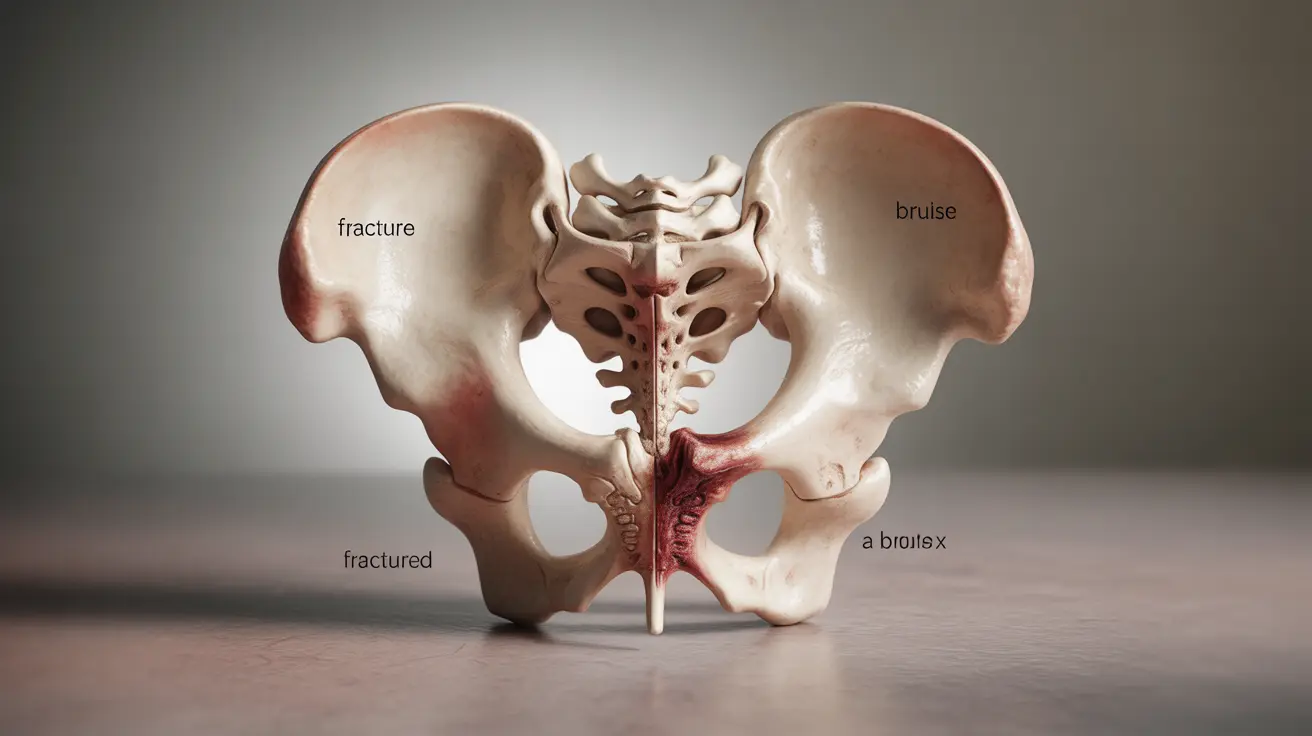Experiencing tailbone pain can be both uncomfortable and concerning, especially when you're unsure whether you're dealing with a broken or bruised tailbone. While both conditions can cause significant discomfort, understanding the differences between these injuries is crucial for proper treatment and recovery.
This comprehensive guide will help you distinguish between a broken and bruised tailbone, explore diagnosis methods, and outline effective treatment approaches for both conditions. We'll also discuss healing timeframes and when to seek professional medical attention.
Understanding Tailbone Injuries
The tailbone, or coccyx, is a small triangular bone at the bottom of your spine. Whether broken or bruised, injuries to this area typically occur from direct trauma, such as falling backward or during childbirth. However, the severity and treatment approach can vary significantly depending on the type of injury.
Distinguishing Between a Broken and Bruised Tailbone
Pain Characteristics
A broken tailbone typically causes sharp, intense pain that worsens significantly with movement or pressure. The pain may radiate down the legs and become severe when sitting or during bowel movements. In contrast, a bruised tailbone usually presents with dull, aching pain that, while uncomfortable, tends to be more manageable and localized.
Physical Signs
With a broken tailbone, you might notice visible bruising and swelling in the affected area, and the pain typically peaks immediately after the injury. A bruised tailbone may show similar external signs but usually with less severity. The area might feel tender to touch in both cases, but a fracture often causes more intense sensitivity.
Diagnostic Procedures
Medical Examination
Healthcare providers typically begin with a physical examination, carefully assessing the affected area for tenderness, swelling, and range of motion. They will also review the circumstances of the injury and evaluate your pain levels during different movements.
Imaging Tests
X-rays are commonly used to confirm a broken tailbone, while MRI or CT scans might be necessary in some cases to assess the full extent of the injury. These tests can help differentiate between a fracture and a bruise, guiding the appropriate treatment approach.
Treatment Approaches
Conservative Management
Both conditions initially benefit from conservative treatment methods, including:
- Ice therapy for the first 48 hours to reduce swelling
- Special cushions or donut pillows to relieve pressure while sitting
- Over-the-counter pain medications
- Gentle stretching exercises as recommended by healthcare providers
Advanced Treatment Options
For more severe cases, especially with broken tailbones, additional treatments might include:
- Prescription pain medication
- Physical therapy
- Manual manipulation by a specialist
- In rare cases, surgical intervention
Recovery Timeline and Expectations
A bruised tailbone typically heals within 4-6 weeks with proper care and management. However, a broken tailbone may require 8-12 weeks or longer for complete recovery. The healing time can vary significantly based on the severity of the injury and adherence to treatment recommendations.
Frequently Asked Questions
What are the main differences in symptoms between a broken and a bruised tailbone?
A broken tailbone typically causes severe, sharp pain that significantly worsens with movement, while a bruised tailbone presents with more moderate, dull aching. Broken tailbones often cause more intense pain during specific activities like sitting or having bowel movements, whereas bruised tailbones generally cause consistent but less severe discomfort.
How can doctors diagnose whether a tailbone injury is a fracture or just a bruise?
Doctors typically use a combination of physical examination and imaging tests. They will assess pain levels, visible bruising, and swelling, then often order X-rays to confirm a fracture. In some cases, MRI or CT scans may be necessary for a more detailed evaluation.
What treatment options are recommended for both broken and bruised tailbones?
Both conditions are typically treated with conservative measures including ice therapy, specialized cushions, pain medication, and rest. More severe cases, particularly fractures, may require prescription pain medication, physical therapy, or rarely, surgical intervention.
How long does it typically take to heal a broken tailbone compared to a bruised tailbone?
A bruised tailbone usually heals within 4-6 weeks with proper care, while a broken tailbone typically requires 8-12 weeks or longer for complete recovery. The exact healing time depends on injury severity and treatment compliance.
When should someone with tailbone pain see a doctor or consider surgery?
Seek medical attention if you experience severe pain, difficulty with basic activities, numbness or tingling in the legs, or if symptoms persist beyond a few days. Surgery is rarely needed but might be considered if conservative treatments fail after several months or if there's severe displacement of the bone.




